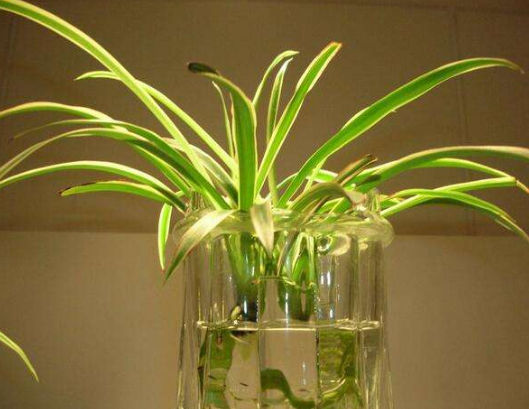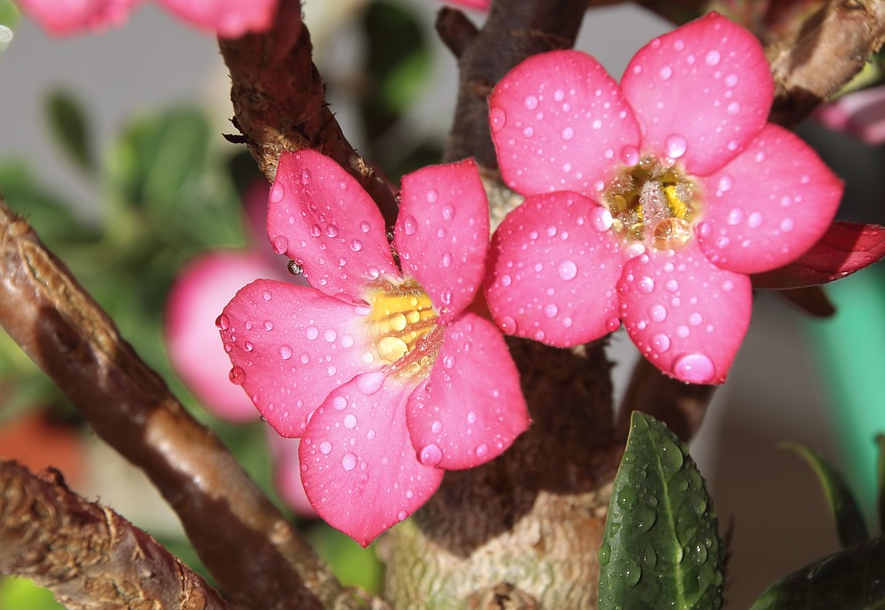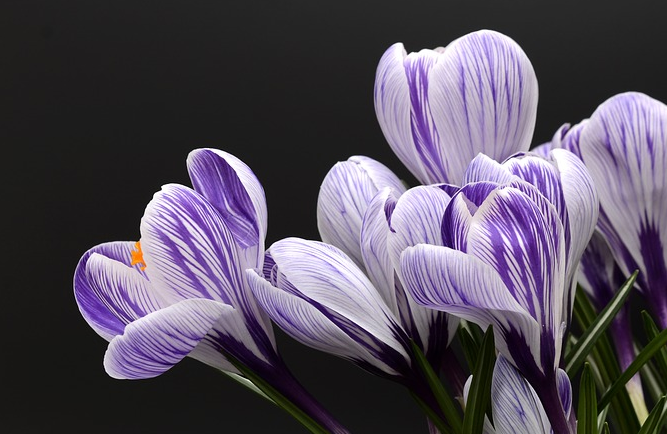Planting skills: soilless cultivation techniques of Cymbidium
The shape of the hanging orchid is elegant and chic, strange and colorful, and is deeply loved by people. In addition to the traditional use of soil cultivation, it can also carry out soilless cultivation, and gradually replaced the traditional cultivation methods. So what are the steps of Cymbidium in soilless cultivation and what matters should be paid attention to? The following are the cultivation techniques of Cymbidium: the soilless cultivation technique of Cymbidium.

What is soilless cultivation
Soilless cultivation literally means not using soil, but using something else instead of soil to grow plants. Generally, they are water culture, aerosol culture and substrate cultivation. Some people will ask, without soil, how can plants have sufficient nutrients? Don't worry, we can use artificial culture medium to provide plant nutrients, which is more scientific.
The soilless cultivation of Cymbidium is mainly divided into two kinds, one is solid, that is, it is laid with particles such as stones at the bottom of the basin, and the other is hydroponics. Today we are mainly talking about the first kind of cultivation with solid substrate.
2. the method of soilless cultivation of Cymbidium.
1. Matrix selection
In soilless cultivation, peat, river sand, water moss, vermiculite, ceramsite and other materials with good air permeability and water permeability can be selected as substrates. It is not only beautiful but also suitable for the growth of orchids.
two。 Container selection
Without the muddy soil, the white and fat roots of Cymbidium can be perfectly presented. Therefore, we had better choose transparent glass containers to improve viewing. While watching the leaves, you can also enjoy the roots and kill two birds with one stone.
3. Treatment of hanging orchid
Before carrying out soilless cultivation, our protagonist, the hanging orchid, must be dealt with in advance.
After digging out of the soil, first wash the soil on the roots with clean water; then cut off the old and rotten roots, leaving intact fibrous roots. In addition, it is necessary to clean up the diseased leaves, wash the leaves and keep them intact.
4. Preparation of nutrient solution
Add 0.354 grams of calcium nitrate, 0.396 grams of calcium sulfate, 0.408 grams of potassium dihydrogen phosphate, 0.074 grams of potassium chloride, 0.493 grams of magnesium sulfate and 10 milliliters of trace element mother liquor per liter. two。 Calcium nitrate 1.8g, ammonium sulfate 0.187 g, potassium dihydrogen phosphate 0.62g, magnesium sulfate 0.54g, potassium chloride 0.62g, ferrous phosphate 0.0278 g per liter.
When preparing, first mix and dissolve them, then dilute them with water to 1 liter, stir well. If you find it troublesome, you can go to the flower market to buy a prepared nutrient solution.
3. Concrete steps of soilless cultivation of Cymbidium
In late spring and early summer, put some permeable ceramsite at the bottom of the basin with a thickness of 3 or 4 cm.
Then put the processed orchid in the middle of the basin, add the solid matrix of your choice to eight minutes full, and gently press it with your hands.
Finally, cover the surface with a layer of fine ceramsite or water moss to decorate the appearance.
IV. Maintenance and management of soilless cultivation of Cymbidium
1. Light
The hanging orchid likes the shady environment, so we should ensure that the hanging orchid has 4 hours of scattered sunlight every day, and be careful not to be directly exposed to strong light, otherwise it will make the leaves withered and yellow.
two。 Moisture content
Although Cymbidium can be hydroponically cultured, we use substrate culture this time. Therefore, usually replenish water, only need to keep the matrix moist, do not need to be too wet, so as not to rot the root. You can sprinkle water on the leaves, and the finer the water droplets, the better, to keep the leaves upright.
3. Nutrient solution
After soilless cultivation, the nutrient solution must be watered thoroughly for the first time, and then the nutrient solution must be added according to the specific growth condition. The growth of Cymbidium is slow in winter and spring, and the nutrient solution can be added every 6 weeks. Summer and autumn is the growing period, which requires a large amount of fertilizer, which can increase the frequency of fertilization, and can be irrigated every 15 days.
Time: 2019-04-05 Click:
- Prev

What are the effects and functions of desert roses? How to plant it? What are the precautions?
Desert rose, also known as Tianbao flower, the succulent plant of Apocynaceae likes high temperature, dry and sunny environment, is resistant to heat and cold, and gets its name because its origin is close to the desert and as red as a rose. Kenya and Tanzania, which originated in Africa, are beautiful when they are in full bloom and are often used as potted plants to watch.
- Next

Culture methods and matters needing attention of saffron
Saffron is a kind of perennial bulb flower of saffron genus of Iridaceae, and it is also a common spice. The leaves of saffron are slender and young, and the flowers are delicate and elegant, with a variety of colors and special fragrance. They are not only the favorites in the grass garden, but also famous plants decorated in gardens or potted plants as desk furnishings.
Related
- Fuxing push coffee new agricultural production and marketing class: lack of small-scale processing plants
- Jujube rice field leisure farm deep ploughing Yilan for five years to create a space for organic food and play
- Nongyu Farm-A trial of organic papaya for brave women with advanced technology
- Four points for attention in the prevention and control of diseases and insect pests of edible fungi
- How to add nutrient solution to Edible Fungi
- Is there any good way to control edible fungus mites?
- Open Inoculation Technology of Edible Fungi
- Is there any clever way to use fertilizer for edible fungus in winter?
- What agents are used to kill the pathogens of edible fungi in the mushroom shed?
- Rapid drying of Edible Fungi

